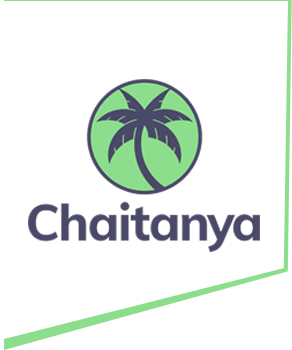Oct 03, 2024
Introduction
Poverty has been a single major factor that has been affecting our country for decades. India, a country known for its diverse cultures and rich heritage, today is still struggling to eradicate poverty. One of the main factors contributing to poverty is a lack of financial resources and mainly financial awareness. As of 2022, approximately 908.8 million people resided in rural areas across India. Since the poor always lacked any sort of collateral, they were ignored by traditional banks for any sort of loan or other financial products. India is struggling to break the chains of poverty.
However, Microfinance Institutions have been playing a crucial role in breaking the chains of poverty since their inception. Targeting only the poor and rural parts of the country to uplift the poor and provide basic life necessities, these institutions truly are the country’s best organizations striving for a poor-free India. One such institution is Chaitanya India Fin Credit Private Limited, an NBFC-MFI, wholly owned subsidiary of Svatantra Microfin Pvt. Ltd. is heading towards its mission to financially strengthen low-income families at the PAN India level, currently working in 13 states. Over our 15 years of journey in serving the underprivileged, we truly believe that the chains of poverty can be broken with a strategic approach. In this blog, let us discuss the key role of microfinance in empowering rural poor families.
Microfinance in India: context and importance
India’s economic heart resides in its rural areas and microfinance institutions have been playing a key role in promoting financial inclusion. These institutions provide affordable and accessible financial services to the poor, focusing mainly on women. Many rural communities have benefited from various schemes introduced by these institutions.
Use cases
- Self Help Groups(SHGs)
SHGs are independent community-based groups consisting of multiple people from different backgrounds who help each other financially. Microfinance institutions approach these groups, consult their needs and requirements and offer suitable financial solutions that can help the group across various domains, including financial autonomy, confidence, and overall well-being. This can significantly improve the people’s standard of living and contribute in helping them establish financial independence.
- Joint Liability Groups(JLGs)
Joint Liability Groups were introduced by NABARD, the National Bank for Agriculture and Rural Development to target the poor and offer low interest rates primarily. Chaitanya, a leading microfinance institution in India is serving the industry’s lowest interest rates on micro loans for JLGs across various rural parts of the country. Institutions like Chaitanya, gather these groups and offer loans at low interest rates without any collateral. This allows microfinance to reach more rural parts of the country and help reduce the poverty rate. The role of microfinance in assisting these JLGs is helping several people, especially women become entrepreneurs and mainly financially independent.
Some of the key features of JLGs include
- The members of the group come together to apply for loans without any collateral.
- Unlike traditional loans, JLGs do not require individual land titles.
- The group should engage in similar economic activities like farming, livestock, or any business.
- Individual retail loan
Microfinance institutions also play a key role in addressing the middle-class population of India. Most middle-class families are still struggling in India to become financially independent despite a decent lifestyle. Chaitanya, a renowned microfinance company in India, is also targeting these lower middle-class people and helping them establish a financially independent lifestyle by offering retail loans at extremely low interest rates. Many other institutions are also striving to establish a more concentrated financial independence in the country, thus playing a vital role in addressing the poor.
Conclusion
Overall, the role of microfinance institutions in empowering the rural population is substantial.
By providing accessible loans at lower interest rates and targeting the underprivileged rural population of India, these institutions have been enabling financial inclusion and independence. Chaitanya especially is committed to providing innovative and personalized financial products to financially backward communities of the country.



